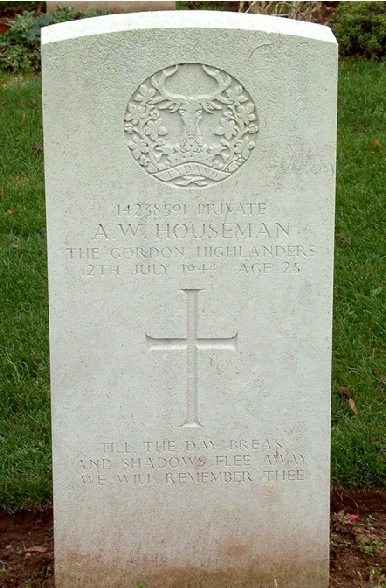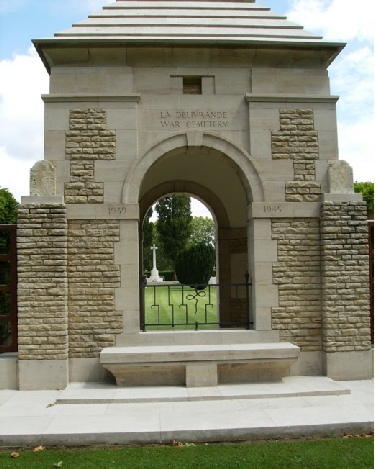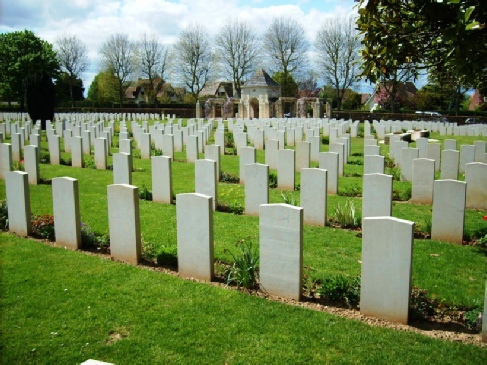
Arthur William Houseman
1919 - 1944
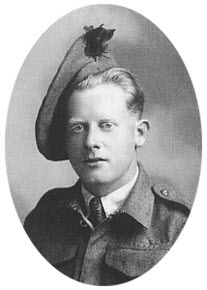

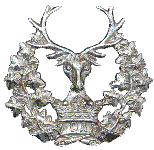
We have no Service Record of Arthur William Houseman. We know from the Commonwealth Graves
Commission that he was a Private, his battalion (1st Bn Gordon Highlanders), service number,
the date he died & where he is buried.

In France
The 1st bn Gordon Highlanders were part of the 153rd Infantry Brigade of the 51st ( Highland ) Division.
Battle of Normandy
The 1st bn Gordon Highlanders were part of the 153rd Infantry Brigade of the 51st ( Highland ) Division.
Battle of Normandy
The 51st Division landed in Normandy on 7 June, as part of I Corps. After spending a brief period supporting 3rd Canadian Infantry Division, it was sent across the
Orne River, and spent two months supporting the 6th Airborne Division in its bridgehead. During this period it fought many difficult actions at places such as Breville
(11-12 June) and Colombelles (11 July). Its performance in Normandy was, overall, considered disappointing, particularly by General Montgomery, who stated in a
telegram to Field Marshal Brooke that the division "had failed every mission it was given" . This led to the replacement of its Normandy commander, Major-
Smith, with Major-General Thomas Rennie, who had served with the division in France, North Africa and Sicily before being elevated to
command of 3rd Infantry Division for the Normandy invasion. On 1 August 1944 the division, along with the rest of I Corps, became part of the newly-activated First
Canadian Army. The division fought alongside this army in Operation Totalize, before advancing to Lisieux. It then continued east over the river Seine and headed,
on Montgomery's order for Saint-Valéry-en-Caux, the scene of the division's surrender in June 1940. The division 's massed pipes and drums played in the streets
of the town, and a parade included veterans of the 1940 campaign were with the 51st in 1944. A similar event occurred at Dieppe when it was liberated by the 2nd
Canadian Infantry Division.
Orne River, and spent two months supporting the 6th Airborne Division in its bridgehead. During this period it fought many difficult actions at places such as Breville
(11-
telegram to Field Marshal Brooke that the division "had failed every mission it was given" . This led to the replacement of its Normandy commander, Major-
on Montgomery's order for Saint-
Canadian Infantry Division.
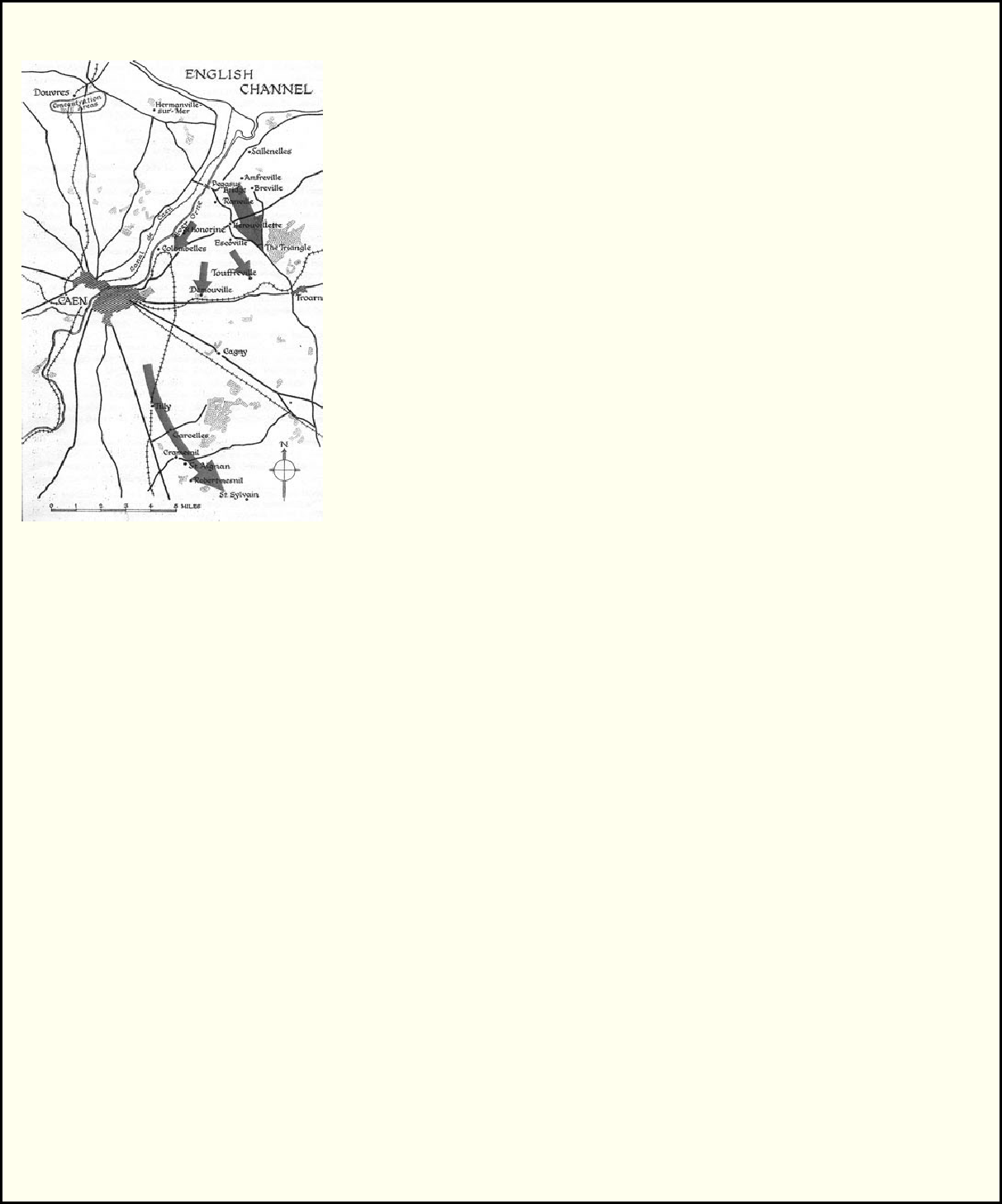

The Battle for Colombelles 11 July 1944
It came all to a head at the village of Colombelles. The village, about a mile east of Caen, was dominated by a large factory with
it’s large chimneys towering into the sky. The factory was an ideal position for German observers, giving them a wide view of the
surrounding countryside.
The 153 Brigade was tasked with attacking the position at night. They were reinforced with the 7th Black Watch (154 Brigade).
The plan called for the 1st Gordons to take the village of Colombelles from Longueval, the 5th Black Watch was to seize the
crossroads at the northeast corner of the factory and the 7th Black Watch would pass through the 1st Gordons and take the
Factory area. Royal Engineers would then destroy the chimneys then all troops would withdraw. It was estimated the operation
would take no more than a day.
The operation was launched on 11 July at 01.00 hours. The 1st Gordons immediately ran into trouble taking the village. Two
companies penetrated the western corner of Colombelles, but the other two companies were stalled by heavy artillery, mortar and
small arms fire. The 5th Black Watch took the crossroads and took up positions in the houses around the area. By 04.00 hours it
was decided to withdraw the two companies in the village and assemble the 1st Gordons for another attempt to take the village at
dawn. Unfortunately the Germans detected the Gordons¹ withdrawal. They put up flares and withdrawing companies of the 1st Gordons
suffered severely.
The 5th Black Watch were now isolated at the crossroads, their only protection being the few building they occupied as the ground
proved too hard to dig-
Armoured Brigade¹s Sherman tanks, but they were about meet some devastating opponents.
At 06.30 three Tiger Ie (503. Schwere Panzerabteilung) and two Panzer IV H tanks (21. Panzerdivision) emerged from the southern
end of the factory. Of the eleven Shermans and Firefly tanks supporting the 5th Black Watch ten were destroyed by the German
panzers. The 5th Black Watch was forced to withdraw without sufficient anti-
By 09.30 the withdrawal was completed, and the operations to clear the factory has failed. The operation had taken a heavy toll on
153 Brigade, who withdrew back to Longueval. The division continued to contribute to the fighting to expand the bridgehead.
The 5th Seaforth (152 Brigade) was positioned on the edge of The Triangle by 9 July. The Triangle was shaped as it was named with
the point facing south, it was heavily wooded and the Germans held southern and eastern edges with a mixture of regular troops and
auxiliary Osttruppen. With the opening of Operation Goodwood (18 July) the 5th Seaforth were assigned the role of taking
“The Triangle”. Heavy bombing followed by a heavy artillery barrage cleared the way and the highlanders took the troublesome area
aided by Churchill Crocodile flame throwing tanks. Once taken the 2nd Seaforth and 5th Camerons push through The Triangle down
the Troarn road. The 5th Camerons grimly held their new positions for ten days under intense artillery fire before being relieved by the
7th Black Watch. The 153 Brigade relieved the whole 152 Brigade shortly afterward.
As we know that Arthur William died on the 12 July 1944 it was most likely as a result of injuries received at the Battle of Colombelles on the 11 July.


Private
Arthur William Houseman
died on the
12 July 1944
Aged 25
whilst serving with the
1st Bn Gordon Highlanders
He is buried at La Delivrande
Cemetery, Douvres, France
(Location VIII. A. 4.)
Arthur William Houseman
died on the
12 July 1944
Aged 25
whilst serving with the
1st Bn Gordon Highlanders
He is buried at La Delivrande
Cemetery, Douvres, France
(Location VIII. A. 4.)
Private - service number 14238591
1st Gordon Highlanders
Arthur’s Grave
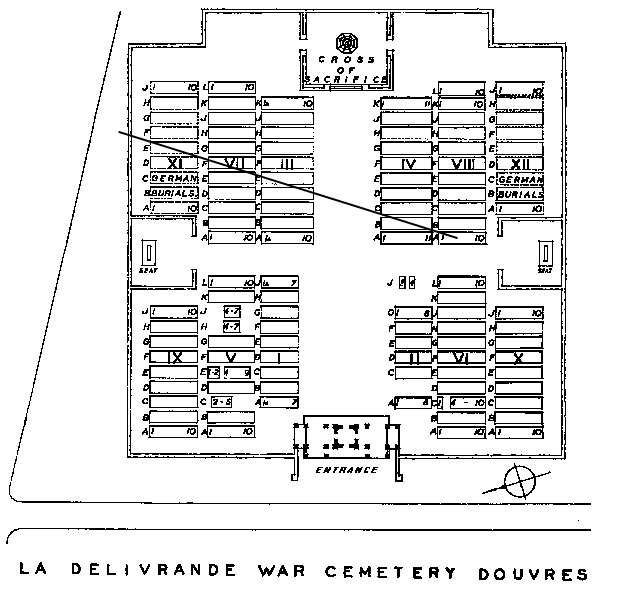
The Allied offensive in north-western Europe began with the Normandy landings of
6 June 1944. The burials in La Delivrande War Cemetery mainly date from 6 June
and the landings on Sword beach, particularly Oboe and Peter sectors. Others were
brought in later from the battlefields between the coast and Caen. There are now 942
Commonwealth servicemen of the Second World War buried or commemorated in this
cemetery. 63 of the burials are unidentified but there are special memorials to a
number of casualties known to be buried among them.
The cemetery also contains 180 German graves.
and the landings on Sword beach, particularly Oboe and Peter sectors. Others were
brought in later from the battlefields between the coast and Caen. There are now 942
Commonwealth servicemen of the Second World War buried or commemorated in this
cemetery. 63 of the burials are unidentified but there are special memorials to a
number of casualties known to be buried among them.
The cemetery also contains 180 German graves.
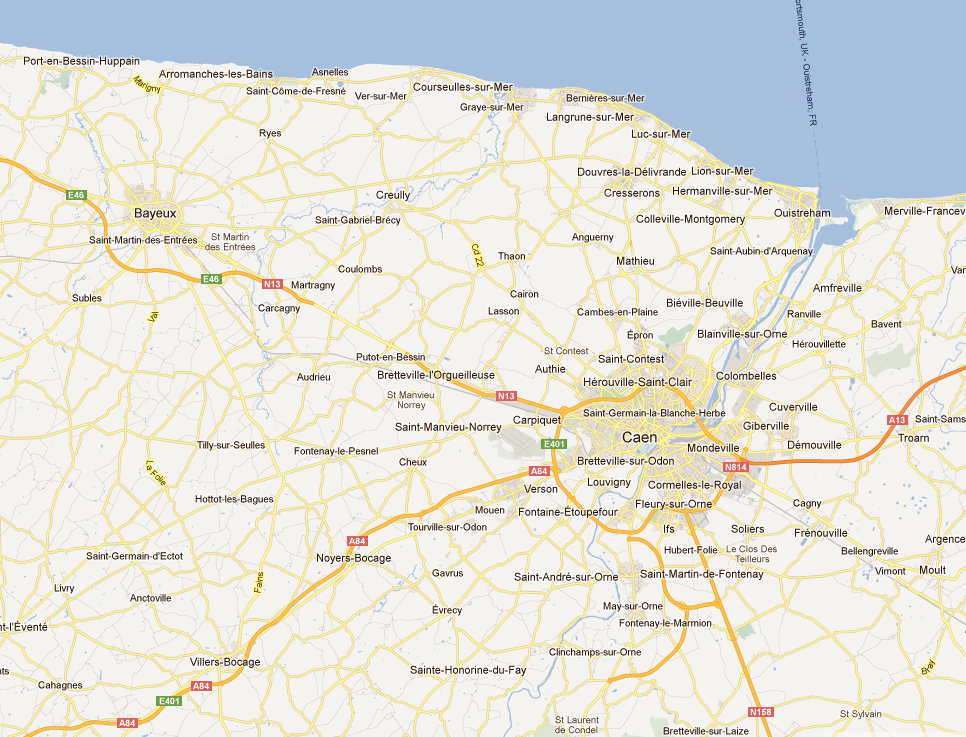
The Battle for Colombelles 11 July 1944

La Delivrande Cemetery
The Battle Breville 11-12 June 1944
Breville
